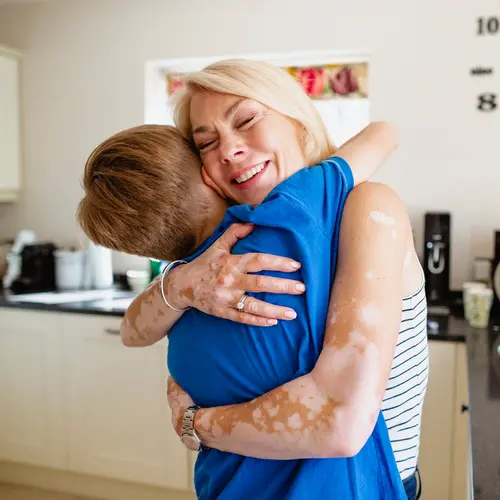Skin cysts and tumors are skin problems that sometimes cause pain.
Skin cysts are non-cancerous closed pockets or pouches of tissue that are filled with fluid or other material. They may feel like small peas beneath the surface of the skin. They usually feel smooth and may roll under the skin when pressure is applied to them. If you look closely, you will see a small opening to the surface, called an epidermal pore.
Skin tumors are abnormal growths of tissue that can be malignant (cancerous) or benign (harmless). Skin tumors become extremely common as people get older.
Some common benign tumors include:
- Warts (skin tumor resulting from a virus)
- Seborrheic keratoses (growths on the skin ranging from light skin color to dark brown)
- Nevi (skin growths such as moles or birthmarks)
- Dermatofibromas (scar tissue from an old bug bite or acne lesion)
- Lipomas (normal fat in an abnormal location, most often from a traumatic injury)
Skin Cysts
What Causes Skin Cysts?
Cysts can develop as a result of infection, clogging of sebaceous glands, or around foreign bodies.
How Are Skin Cysts Treated?
It is rare but some cysts disappear on their own without treatment. Others require treatment that involves lancing (piercing with a sharp object) the cyst and draining it. Some cysts can be treated with an injection of cortisone medication. Cysts that do not respond to treatment can be removed through surgery - especially if they become infected more than once and/or grow.
Skin Tumors
What Causes Skin Tumors?
The cause of skin tumors is not known, but some people may be likely to develop more or less of them based on heredity.
How Are Skin Tumors Treated?
Often, no treatment is required for skin tumors. However, methods to treat skin tumors may include:
- Curettage and electrodesiccation: This involves scraping away the tumor tissues with a sharp surgical instrument called a curette. An electrosurgical unit may then be used to stop bleeding.
- Surgical excision: This involves cutting into the skin, removing the growth, and closing the wound with stitches.
- Cryosurgery: During this procedure, liquid nitrogen is sprayed directly onto the skin or an instrument is used to freeze the tissue.
Pain is generally alleviated once the cyst or tumor is removed. For short-term pain resulting from treatment, Tylenol or Aleve may be taken.

